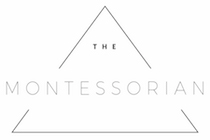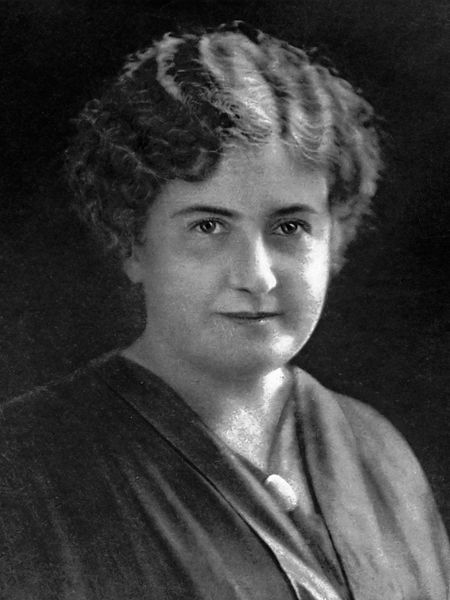The year in which Maria Montessori was born (1870) was the year that Italy became a unified nation (Kramer, 1988; Röhrs, 2000; Standing, 1957). According to Kramer, before that time “… Italy had been a backwater of Western Europe” where social and political developments came late and were not implemented successfully (Kramer, 1988, p. 19). Kramer (1988) declared that the unification of the nation changed the political structure but scarcely produced any significant changes in the social composition. As such, there were significant divides between the poor and the wealthy in terms of education and privileges (Kramer, 1988; Montessori, 1912). Many saw education as the key to successful reform, so the government established elementary schools that were separate from the Catholic Church, and where attendance was compulsory (Kramer, 1988). Public girls schools were founded, although many girls continued to attend the private Catholic schools, with the public schools primarily populated by boys (Kramer, 1988). Kramer (1988) declared that while there were high expectations of improving the illiteracy of the masses at the beginning, these hopes gradually disappeared as apathy took over and illiteracy continued under the reign of rigid bureaucracy and difficult working conditions for the poor. It was into this social and educational context that Montessori was born, where the anticipation and disenchantment both had significant impacts on her later vision for the future of education (Kramer, 1988).
O’Donnell (2007) posited that the origins of Montessori education could be traced back to the start of modern science appearing in the sixteenth century. Furthermore, Röhrs (2000, p. 6) suggested that Montessori was one of the first people to attempt founding “… a true science of education” through scientific observation. He used this excerpt from Montessori (1976, p. 120) to explain:
The possibility of observing the mental development of children as natural phenomena and under experimental conditions converts the school itself in activity, to a type of scientific environment devoted to the psychogenetic study of man. (Röhrs, 2000, pp. 6–7)
While the attitude of the Renaissance and the upper classes was deeply pro-science and anticlerical in the years following the unification of Italy (Kramer, 1988), Montessori employed a strong Christian faith alongside her scientific principles, and, therefore, viewed childhood as an extension of Creation (Kramer, 1988; Montessori, 1912; Röhrs, 2000; Standing, 1957). As such, she employed an amalgamation of methods through her scientific observations and experiments, and her view that hope, faith and trust were the preeminent instruments for teaching confidence and independence to children (Montessori, 1912; Röhrs, 2000). Röhrs (2000, p. 8) asserted that she was successful in connecting her perception of science with “… this form of faith as inner knowledge and improved vision …” This unique worldview at that time in history enabled Montessori to understand the needs of society and see a way that she could improve life for those who couldn’t do it for themselves.
In 1896 Montessori joined an organization for women aimed at inspiring women to safeguard their interests in a supportive environment . It was through this organization that she attended International Women’s Congress in Berlin to represent the women of Italy (Standing, 1957; Stewart-Steinberg, 2007). Stewart-Steinberg (2007, p. 300) stated that at this congress and inside the association, Montessori combined the “practical feminism” of Italy at the time and her medical training to advocate a “scientific feminism.” Stewart-Standing (2007) went on to explain that these women became highly involved in improving hygiene, education, and family morals through their tangible and positive interventions in women’s lives. This practical viewpoint of the suffragette movement also corresponded with changes in the Catholic Church’s view of women’s roles in modern Italy (Stewart-Steinberg, 2007). The Church declared that “… the Madonna wanted women to develop into modern but Catholic subjects … by becoming engaged in social activism” (Stewart-Steinberg, 2007, p. 300). As such, the rapid escalation of women’s participation in charitable works and the improvement of society resulted in a new perception of them—a “canonization” or “beatification” (Stewart-Steinberg, 2007, p. 300). These new understandings of women’s roles in society assisted the rise of Montessori’s fame, and is evident in her works through her implicit use of social activism (Stewart-Steinberg, 2007). Montessori successfully merged her feminism, social activism, medical knowledge, and Christian faith in her social and educational works, where she empowered women to become social equals to men in their improvements of the educational system (Stewart-Steinberg, 2007).
One way Montessori empowered women was through the training of teachers in her methods. As well as social relationships between men and women being disparate at that time, the divide between the teacher and the child was also drastically dissimilar (O’Donnell, 2007; Standing, 1957). Then, the teacher had the right to dominate all classroom activities, but also the child (Standing, 1957). Standing (1957, p. 22) stated “… [Montessori’s] whole life’s work could be summed up as an effort to bring to an end the agelong [sic] struggle … between the Child and the Adult, a struggle which … is no less real because it is carried on unconsciously.” Consequently, in line with her social activism, Montessori advocated a restructuring of the relationship between student and teacher (Standing, 1957). In this improvement was seen the rise of ‘freedom with limits’, where students improved their mental health and grew in self-reliance, independence, and a sense of justice (O’Donnell, 2007; Standing, 1957). These ideas that Montessori was advocating were so unlike the previous teaching methods, that teachers needed re-training (O’Donnell, 2007). However, Standing (1957) alleged that teachers who participated in Montessori’s training courses habitually came to understand more about themselves and controlling their own lives than they did about education and children. As such, some viewed Montessori as a social reformer, where she advocated the rights of those without a voice in society—women, children, and the poor (Standing, 1957; Stewart-Steinberg, 2007).
Montessori endured the worst wars in human history, including surviving internment during World War Two at the age of 69 alongside her son, Mario (O’Donnell, 2007). Although she was released, Mario remained captive until her 70th birthday, which was also the first time she publicly recognised him as her son (O’Donnell, 2007). They were forbidden from leaving India until the completion of the war (O’Donnell, 2007). Montessori made the most of her and Mario’s time there, training thousands of Indian teachers and testing new ideas for early childhood and high school (O’Donnell, 2007). She also met or re-met many influential people whilst there, including Mahatma Gandhi, Krishnamutri, Jawaharlal Nehru, and Sir Rabindranath Tagore, who agreed with or praised Montessori’s principles and works (O’Donnell, 2007; Standing, 1957). Other than her time spent in India, Montessori travelled to many different countries over the years for her work, including the Netherlands (where she died in 1952), England, Scotland, America and various areas of Italy (Kramer, 1988; O’Donnell, 2007; Standing, 1957). Wherever she went, she left inspiration and reformation in her wake, changing society’s understandings of education and the role of women.
The theorists that influenced Montessori’s work will be explored in Part 2 next week.
Reference List
Kramer, R. (1988). Maria Montessori: A Biography. Chicago: Da Capo Press.
Montessori, M. (1912). The Montessori Method. English (American E.). Radford: Wilder Publications.
O’Donnell, M. (2007). Maria Montessori. (R. Bailey, Ed.). London: Bloomsbury Academic.
Röhrs, H. (2000). Maria Montessori (1870-1952), XXIV(1), 1–12.
Standing, E. M. (1957). Maria Montessori: Her Life and Work. New York: Plume.
Stewart-Steinberg, S. (2007). The Pinocchio Effect: On Making Italians (1860-1920). Chicago and London: University of Chicago Press.

